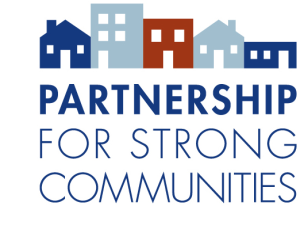Programs & Initiatives:
Tools:
- Ending Youth Homelessness: A Toolkit for Connecticut Schools
- How to Help a Youth in a Housing Crisis (Flyer)
- Next Step Tool
- Young Adult Coordinated Entry Toolkit
Resources:
- Connecticut Services for Young Adults
- Human Trafficking
- LGBTQ Resources
- Shared Housing
- Shelter Diversion
- Youth Rapid Re-Housing
- ctyouthhelp.org
CCEH, in partnership with state agencies, providers, and Opening Doors for Runaway and Homeless Youth, is working to improve the capacity of our communities to serve runaway and homeless youth. Runaway and homeless youth, typically more difficult to identify and connect with needed services, have long been under-counted in our state.
In 2015, Connecticut, led by CCEH and the Partnership for Strong Communities, conducted its first statewide Youth Count. Building on the momentum developed in response to the findings that identified more than 3,000 youth and young adults throughout Connecticut, CCEH has joined with the Connecticut Department of Education, Department of Children and Families, Department of Mental Health and Addiction Services, and Department of Housing among many other state and local organizations to develop strategies to end youth homelessness by the 2022 goal.
In addition, CCEH has helped increase awareness of the prevalence and needs of runaway and homeless youth within communities and share knowledge about the evolving best practices in helping them. Through the facilitation of community engagements, CCEH has also increased collaboration and awareness at a community-level which can build a stronger safety net for our youth across the state.
For resources and support for youth and young adults, please visit ctyouthhelp.org. Information on food, shelter, employment, youth rights, and healthcare is available.
Youth Count Findings: A Profile
Definition of homeless youth used for Youth Count: Youth who have no secure ‘rights of tenancy’ (for themselves or through a parent/guardian) including, but not limited to those living in shelters, transitional housing programs, couch surfing, doubled up, hotel or motels, in parks, on the streets in cars, abandoned buildings, or other places not fit for human habitation.
Some important findings from the 2018 Youth Count include:
- 33.1% had DCF/Foster care involvement
- 20.6% had criminal justice involvement
- 41.1% said they cannot stay where they are as long as they needed
- 22.1% said the place they were currently staying in was unsafe
- 37.1% identified as black and 36.4% identified as Hispanic
- 18.6% of respondents were pregnant or parenting youth
- 11.8% identified as bisexual and 6.1% identified as gay or lesbian
- 70.7% of youth that were homeless or housing unstable said they did not seek shelter
Youth & Young Adult Outreach
Outreach plays an important role in engaging clients who are often the most in need of services. Youth and young adults ages 14 to 24 who are struggling with homelessness or housing instability can be difficult to identify and often hesitate to ask for help. This webinar brings together service providers and experts on outreaching to this population to share advice and information and improve our engagement efforts.
Youth & Young Adult Outreach Webinar
This panel includes:
Mary Ann Haley, Deputy Director at the Connecticut Coalition to End Homelessness
John Lawlor, Director at the Connection
Erin Wixsten, Consultant with OrgCode Consulting, Inc.
Additional Material on Youth Outreach:
- Youth Outreach Webinar Slides-Final
The PowerPoint used in the webinar by the panelists. - Guide to Approaching and Surveying Youth and Young Adults
This guide was put together by the Youth Action Hub, a group of youth and young adults researching issues of housing and homelessness. Please review this material to improve your canvasing and surveying skills. - Approaching and Engaging Youth for the 2017 CT Youth Count!
This helpful video put together with the Youth Action Hub provides advice on effectively outreaching and engaging youth and young adults to be surveyed in the 2017 CT Youth Count! This video is especially useful for volunteers who do not regularly work in homeless and housing services or with youth and young adults.
The legal rights of homeless youth: a toolkit to raise awareness
The federal McKinney-Vento Homeless Assistance Act requires all school districts provide children and youth experiencing homelessness access to a public education and assistance to assure success in school. This includes the rights regarding school choice, immediate enrollment, and transportation.The overarching goal and intended impact of this toolkit is to inform youth, front-line school staff, and community partners about some of their rights under McKinney-Vento Act and provide them with steps to address these specific issues.
To find the name of your McKinney-Vento Liaison, click here.
For information on the McKinney- Vento Grant Application, please view our recorded webinar here. Eligible applicants are local or regional boards of education or regional educational service centers (RESCs) in Connecticut that serve an identified homeless population of children and youth.
Below are three short films highlighting the legal rights of homeless youth. For discussion guides for each of these films, click here.
This toolkit is a project of the Connecticut State Department of Education, the Connecticut Coalition to End Homelessness, The Institute for Community Research, and the Center for Children’s Advocacy.
Asset Maps of Youth Resources
- Asset map developed by the Torrington community.
- Asset map of Youth Services (Opening Doors for Youth Plan)
- Youth asset resource developed by the Fairfield County community.
- Southeast CT Youth Resources Asset Map
- Northeast CT Youth Resources Asset Map
Youth Resources
- Resources for youth in foster care system
- United States Interagency Council on Homelessness (USICH) Key Documents:
- Could Connecticut Be the First State to End Homelessness? (From October 2018 funding collaborative presentation)
- Supporting In-School and Out-of-School Youth Experiencing Homelessness Through Education and Workforce Partnerships – NCHE Interagency Brief
- Homelessness in America: Focus on Youth – 2018 USICH Report
- Overview: Connecticut Homeless Youth Count
- Opening Doors for Youth Plan (Partnership for Strong Communities)
- 2015 Point-in-Time Count (includes Youth Homelessness Count)
- STRIVE Family Mediation
- Employment Resources (resource page)
- Invisible No More (Study on Homeless Youth in Connecticut)
- Notice of Funding Availability (NOFA) to provide capital funding to upgrade the condition of existing emergency shelter facilities, including upgrades to support the overall health and safety of shelter residents. More information and the application is here.
- Preventing and Ending Youth Homelessness: A Coordinated Community Response
- Local Homeless Education Liaisons
- Determining Homeless Status of Youth
- Promising Practices for Health Centers: Serving Youth Experiencing Homelessness
- National Clearinghouse on Homeless Youth & Families – Runaway and Homeless Youth (website)
- Study on Young People’s Access to Housing Services in Connecticut (2016)
- Adult Education Resources for Youth and Young Adults
National Partners in Ending Youth Homelessness
- National Center for Homeless Education (NCHE)
NCHE operates the U.S. Department of Education’s technical assistance and information center
for the federal Education for Homeless Children and Youth (EHCY) Program. - National Association for the Education of Homeless Children and Youth (NAEHCY)
A national membership association dedicated to ensuring educational equity and excellence for children and youth experiencing homelessness.





